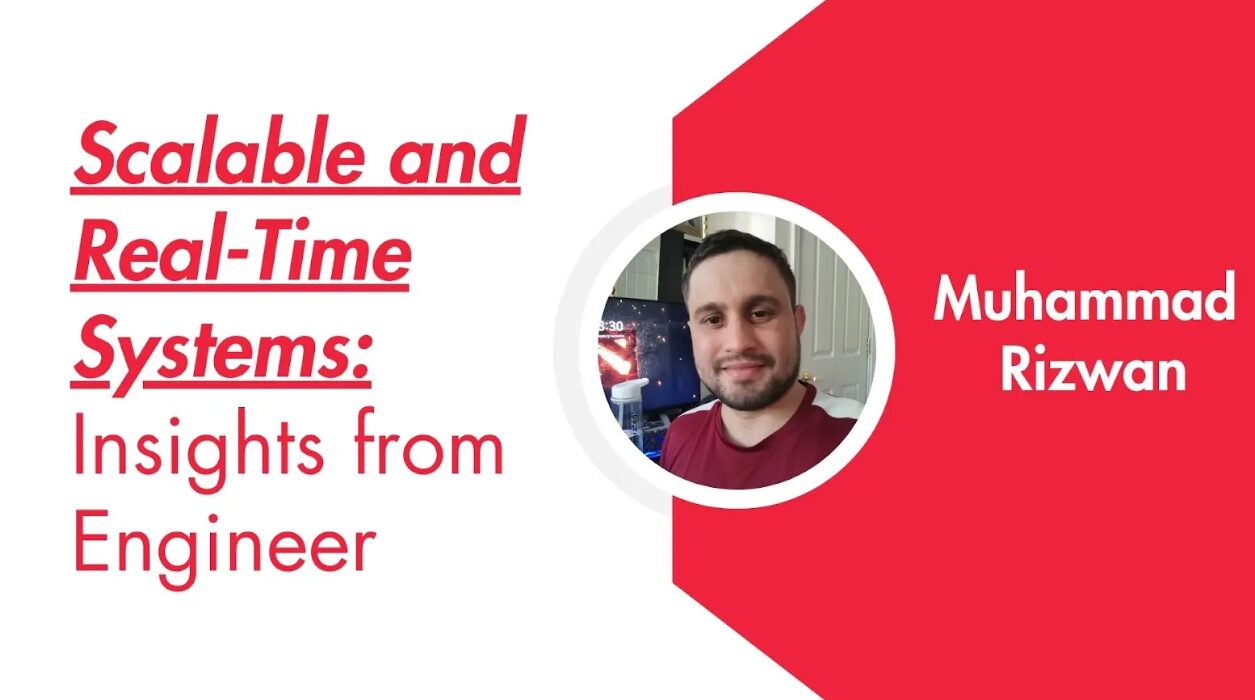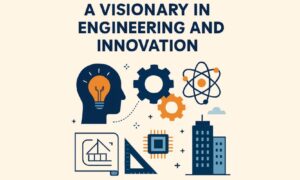In this interview, Muhammad Rizwan, who has progressed from a C# and .NET specialist to a microservices and real-time data solutions expert, explains the modern trends in software engineering for sophisticated systems that require scalability and real-time capabilities. He discusses the transformative impact of cloud-based solutions, such as elastic scalability and pay-as-you-go pricing, on system efficiency. His forward-looking insights into emerging trends like serverless architectures and AI-driven analytics highlight his commitment to innovation and sustainable technology.
Can you briefly describe your professional journey and how you became involved in the vehicle tracking and utilities industries?
Muhammad Rizwan: I started my career as a software engineer specializing in C# and .NET. I gradually switched to cloud platforms AWS and Azure. This led me to the vehicle tracking industry, where real-time tracking, data streaming, and performance optimization are a must. Later the skills I gained with scalable systems helped me transition to work on utilities systems, where I handle complex, distributed systems to solve challenges in energy management, resource monitoring, and smart grid solutions.
How do Microservices help address the complexities of managing real-time vehicle tracking systems?
Muhammad Rizwan: Vehicle tracking systems need to operate real-time, but they are very complicated. Microservices are ideal for breaking down the complexities of these systems because they help isolate functionality into smaller components. For instance:
- Microservices can be scaled independently based on demand, such as scaling up a geolocation service during high usage.
- A failure in one service (e.g., real-time notification) won’t disrupt other services like data ingestion or analytics.
- Teams can use different technologies for different services, optimizing performance for each function (e.g., Node.js for real-time APIs and Python for analytics).
- Smaller services mean faster iteration cycles, essential for rapidly evolving requirements in vehicle tracking.
What were some of the key considerations when designing Microservices for systems with heavy data loads and real-time requirements?
Muhammad Rizwan: From my experience, I can tell that you need to follow the next steps to succeed with heavy data loads and real-time operations:
- Use Event-Driven Architecture (EDA) for microservices to communicate asynchronously. It can help reduce bottlenecks and improve responsiveness.
- Use distributed databases like Cosmos DB or DynamoDB to handle large-scale, low-latency data storage and retrieval.
- Integrate caching layers (e.g., Redis) to reduce database load and speed up frequent queries.
- Use tools like AWS Application Load Balancer or Azure Traffic Manager to ensure efficient resource utilization.
Set up monitoring tools like AWS CloudWatch or Azure Monitor to detect bottlenecks, errors, and resource usage in real time.
How do cloud-based solutions contribute to the scalability and cost-efficiency of vehicle tracking systems?
Muhammad Rizwan: Cloud platforms like AWS and Azure are best for vehicle tracking systems because:
- They can automatically scale resources up or down based on demand, ensuring cost-efficiency during low-traffic periods.
- Services like AWS Global Accelerator or Azure Front Door ensure data and APIs are accessible across regions with minimal latency.
- Cloud providers charge based on usage, allowing businesses to scale without heavy upfront infrastructure costs.
- Services like AWS IoT Core or Azure IoT Hub simplify the ingestion and management of IoT data from vehicles, reducing development overhead.
- Cloud platforms provide pre-built integrations for analytics, machine learning, and notifications, streamlining system enhancements.
How does your experience in vehicle tracking translate to addressing challenges in the utilities industry?
Muhammad Rizwan: The utilities industry shares many parallels with vehicle tracking, particularly in managing real-time data, high-volume IoT devices, and geographically distributed systems. For example:
- Data Analytics: Handling vehicle tracking data in real-time helps in optimizing energy distribution, detecting anomalies, and forecasting demand in utilities.
- Scalability: The skills in building scalable microservices for vehicle tracking can be applied to ensure utilities systems handle peak loads (e.g., during extreme weather events).
- Event Processing: Expertise in EDA can be used to implement real-time notifications for energy outages, consumption anomalies, or maintenance alerts.
What do you see as the next big trends in leveraging Microservices, EDA, and cloud solutions in these industries?
Muhammad Rizwan: I can tell there are following trends:
- Serverless Architectures: Using serverless platforms like AWS Lambda and Azure Functions for lightweight, event-driven services.
- Edge Computing: Bringing computation closer to devices (e.g., vehicles or smart meters) to reduce latency and bandwidth costs.
- AI-Driven Analytics: Integrating AI models into microservices for predictive maintenance, route optimization, and demand forecasting.
- Hybrid Cloud Deployments: Leveraging on-premises and cloud resources together to meet regulatory and performance requirements.
- Federated Microservices: Allowing decentralized teams to deploy and manage their own microservices while maintaining interconnectivity.
Reflecting on your career, what do you consider your most impactful contribution using these technologies?
Muhammad Rizwan: One of my most impactful contributions was leading the design and deployment of a vehicle tracking system that scaled to millions of users while maintaining real-time performance. By adopting a microservices architecture and leveraging AWS for scalability, the system reduced operational costs by 30% and improved response times by 40%. This framework later served as a model for implementing similar architectures in a utilities project, where I helped optimize energy consumption data processing, saving significant costs and enhancing system reliability.



































